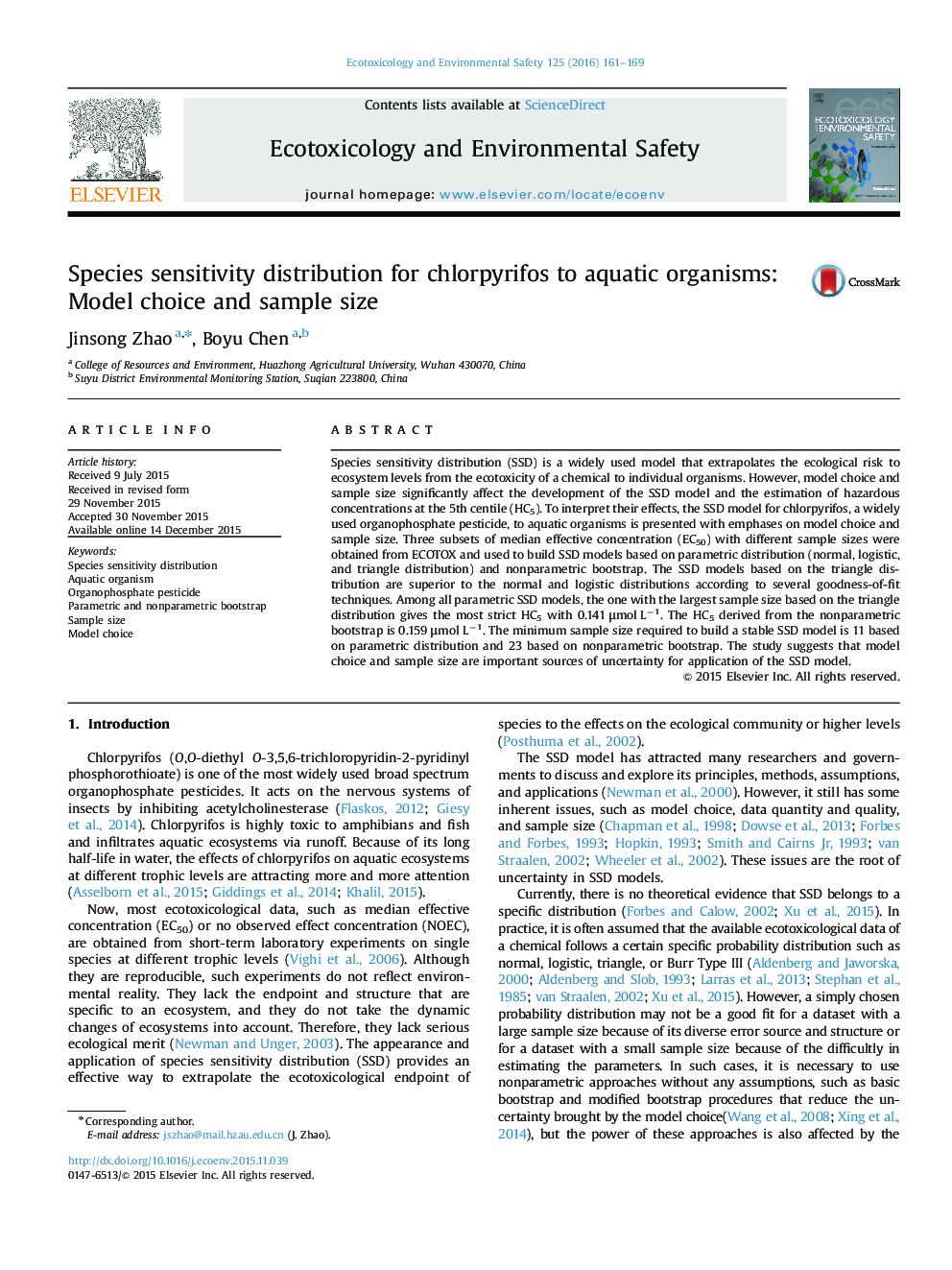| Article ID | Journal | Published Year | Pages | File Type |
|---|---|---|---|---|
| 4419453 | Ecotoxicology and Environmental Safety | 2016 | 9 Pages |
•The SSD models based on the triangle distribution show best fitness.•Sample size heavily affects confidence interval of the model parameters and HC5.•Minimal sample size is evaluated with bootstrap combined with change point analysis.•Model choice and sample size are important sources of uncertainty.
Species sensitivity distribution (SSD) is a widely used model that extrapolates the ecological risk to ecosystem levels from the ecotoxicity of a chemical to individual organisms. However, model choice and sample size significantly affect the development of the SSD model and the estimation of hazardous concentrations at the 5th centile (HC5). To interpret their effects, the SSD model for chlorpyrifos, a widely used organophosphate pesticide, to aquatic organisms is presented with emphases on model choice and sample size. Three subsets of median effective concentration (EC50) with different sample sizes were obtained from ECOTOX and used to build SSD models based on parametric distribution (normal, logistic, and triangle distribution) and nonparametric bootstrap. The SSD models based on the triangle distribution are superior to the normal and logistic distributions according to several goodness-of-fit techniques. Among all parametric SSD models, the one with the largest sample size based on the triangle distribution gives the most strict HC5 with 0.141 μmol L−1. The HC5 derived from the nonparametric bootstrap is 0.159 μmol L−1. The minimum sample size required to build a stable SSD model is 11 based on parametric distribution and 23 based on nonparametric bootstrap. The study suggests that model choice and sample size are important sources of uncertainty for application of the SSD model.
